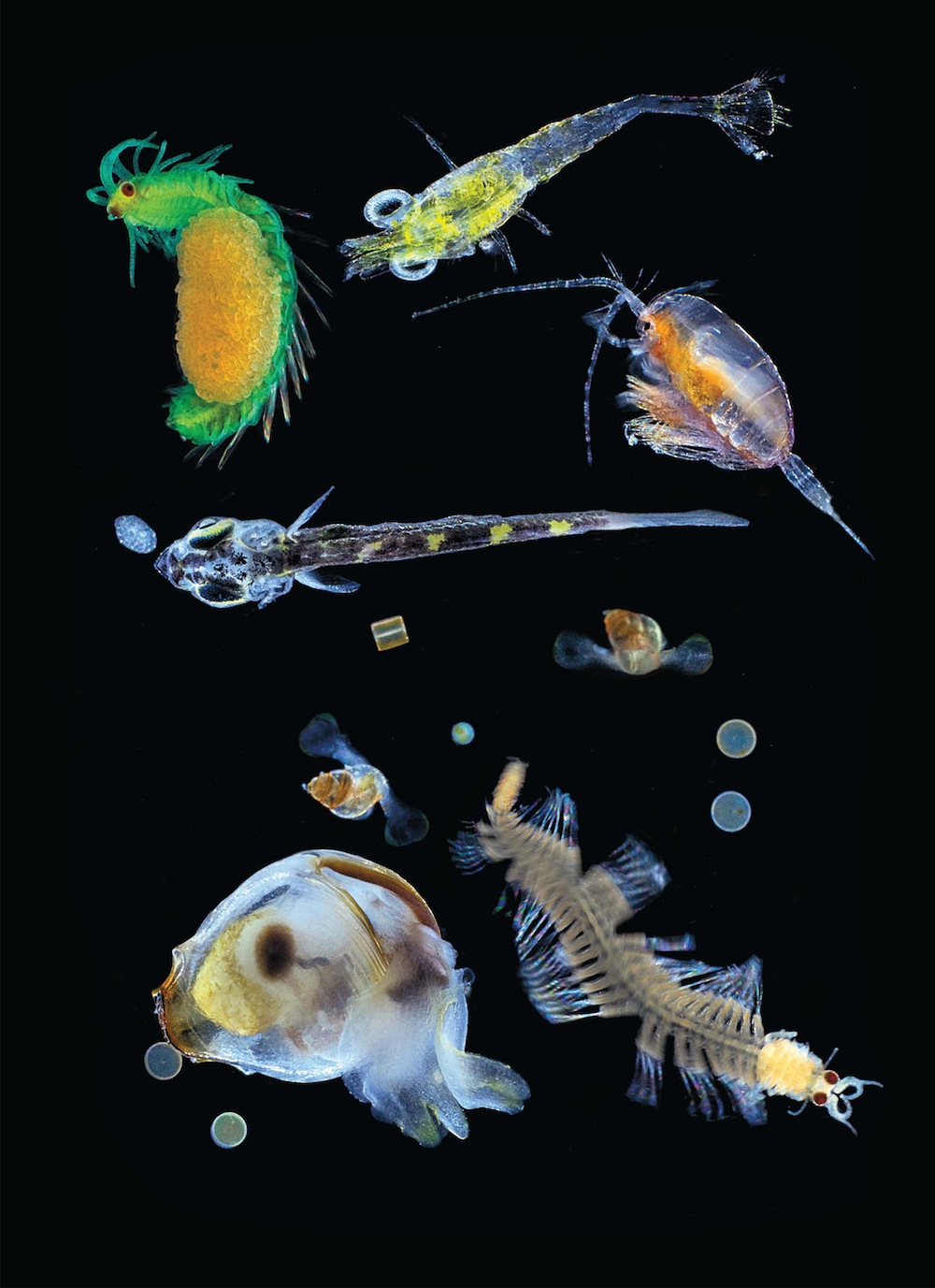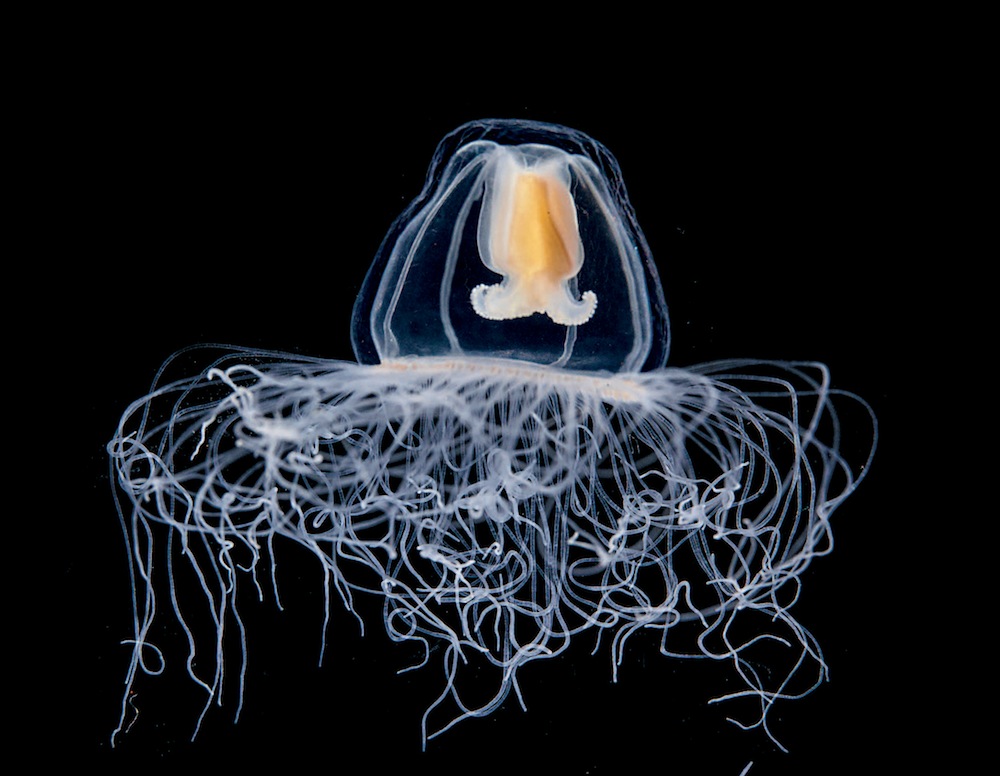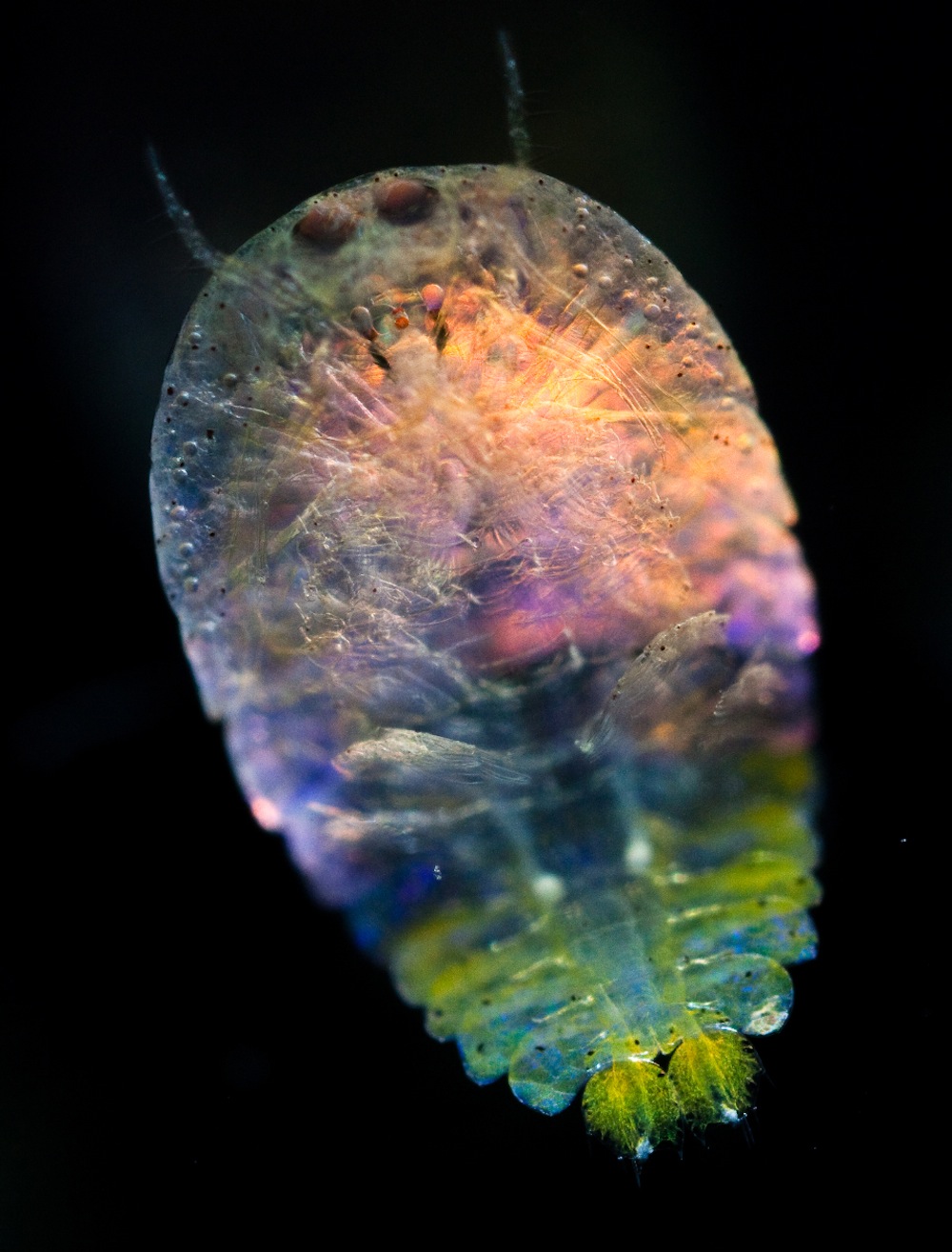An epic, three-year voyage around the world's oceans has revealed an entire ecosystem of tiny organisms that lurk beneath the waves. Scientists set out on the schooner "Tara" to 210 stations in the seas, sampling the water for DNA. They found thousands of previouly unknown species that were larger than bacteria and viruses, but much smaller than the shrimplike creatures known as krill. [Read the full story on the hidden web of sea creatures]
Stunning sea creatures
The scientists documented a menageries of stunning and bizarre sea creatures in the sunlight upper layers of the ocean, from glowing squid to tiny zooplankton. From left to right, the picture shows a crustacean copepod, a spider crab larva, an amphipod, a baby squid, a Phronima amphipod, and an Atlanta pteropod mollusc. (Photo credit: ©Christian Sardet/CNRS/Tara Expéditions)
Tiny world
The team used tow nets with finer and finer mesh to capture some of the most miniscule creatures in the oceans. Here, some of the plankton pulled in from the Pacific Ocean with a 0.003 inch (0.1 millimeter) mesh net. The ultrafine mesh pulled up everything from zooplanktonic animals to larvae to single-celled creatures such as diatoms, dinoflagellates and radiolarians. (Photo credit: ©Christian Sardet/CNRS/Tara Expéditions)
Hidden ecosystem
The team found a huge array of previously unknown single-celled eukaryotes and simple multicellular organisms that lived in the ocean. Among those was the Lauderia annulata, which lurks in the Indian Ocean. This massive diatoms, which is 0.007 inches (0.2 millimeters) across, is actually a single cell. Chloroplasts glow green and yellow inside its body. If it looks like a sparkling, colorful piece of glass, that's because it is: the outer casing of the cell is made of glass. (Photo credit: ©Christian Sardet/CNRS/Tara Expéditions)
Get the world’s most fascinating discoveries delivered straight to your inbox.
Zoo of plankton
The team collected over 35,000 species of zooplankton. Here, this image shows a molluscan pteropod on the right, and two crustacean copepods. (Photo credit: ©Christian Sardet/CNRS/Tara Expéditions)
Immortal creature
Not everything the team catalogued was teeny. Here, an immortal jellyfish viewed by the team. This translucent sea creature was spied in the Mediterranean sea and is likely a close cousin of the immortal jellyfish, known as Turritopsis. (Photo credit: ©Christian Sardet/CNRS/Tara Expéditions)
Glowing crustacean
The team snapped some photos of tiny, multicellular organisms called copepods in the Mediterranean sea. Here, the copepod Sapphirina sparkles as light diffuses through its outer layer of epidermis, which is made up of little plates. Sapphirina tend to congregate where their hosts, barrel-shaped tunicates called salps, are plentiful. (Photo credit: ©Christian Sardet/CNRS/Sharif Mirshak/Parafilms/Tara Expeditions)
Undersea alien
Some of the strange creatures look like would be more at home on another world. Here, an alienlike hyperiid amphipod of the Phronima genus. These little parasites gobble up salps, then use the salps now-empty, jellylike outer husks to protect themselves from predators. (Photo credit: ©M.Ormestad/Kahikai/Tara Oceans)
Three-year tour
More than 100 scientists set sail at different points in time on the Tara, shown here The scientists collected samples of sea life while braving icy Antarctic storms and navigating around pirates in the Gulf of Aden. (Photo credit: ©S.Bollet/Tara Expéditions)
Coral checkup
While traversing the world's oceans, the schooner also visited the sites of 102 coral reefs off the coasts of Djibouti, Saint Brandon, Mayotte and the Gambier Islands. Most seemed to be healthy and seemed to be weather the temperature changes they've experienced so far. But ocean acidifcation and deadly starfish invasions could still harm the coral. (Photo credit: ©A.Amiel/Kahikai/Tara Oceans)

Tia is the editor-in-chief (premium) and was formerly managing editor and senior writer for Live Science. Her work has appeared in Scientific American, Wired.com, Science News and other outlets. She holds a master's degree in bioengineering from the University of Washington, a graduate certificate in science writing from UC Santa Cruz and a bachelor's degree in mechanical engineering from the University of Texas at Austin. Tia was part of a team at the Milwaukee Journal Sentinel that published the Empty Cradles series on preterm births, which won multiple awards, including the 2012 Casey Medal for Meritorious Journalism.











